
What is Biogerontology?
Biogerontology is the scientific study of the biological processes that contribute to aging. It combines elements of biology, genetics, and medicine to study how and why organisms age. It's not just about studying the physical symptoms of aging like wrinkles and frailty but delving deeper to understand the complex biological mechanisms that lead to these outward signs. Understanding these processes may pave the way for interventions that can slow or even reverse some aspects of aging, improving quality of life for older adults.
Theories of Aging
The theories of aging aim to shed light on the intricate processes underlying the biological phenomenon of aging. Aging, as a multifactorial process, is influenced by a diverse array of factors. To explain this complex process, scientists have proposed several theories, each focusing on different aspects of aging.

The mitochondrial theory of aging
The mitochondrial theory of aging proposes that aging is caused by a gradual decline in the function of mitochondria, the energy-producing organelles in cells. Mitochondria have their own DNA, which is separate from the DNA in the nucleus of the cell. As mitochondria divide, their DNA can accumulate mutations, which can lead to decreased efficiency in producing energy. This can lead to a decrease in cellular function, which can eventually lead to the death of the cell.
The mitochondrial theory of aging is supported by a number of lines of evidence. For example, studies have shown that cells from older animals have fewer mitochondria and that these mitochondria are less efficient at producing energy. Additionally, studies have shown that mutations in mitochondrial DNA are associated with a number of age-related diseases, such as Alzheimer's disease and Parkinson's disease.
While the mitochondrial theory of aging is not the only theory of aging, it is one of the most well-supported theories. It is possible that aging is caused by a combination of factors, including mitochondrial dysfunction, telomere shortening, and changes in the immune system. However, the mitochondrial theory of aging provides a plausible explanation for why aging occurs and why it is associated with a decline in physical and cognitive function.
The Free Radical Theory of Aging
The free radical theory of aging states that the accumulation of reactive oxygen species (ROS) and other reactive free radicals damages cells and tissues, leading to aging and age-related diseases. ROS are highly reactive molecules that can damage DNA, proteins, and lipids. They are produced by normal cellular processes, such as metabolism, and by environmental factors, such as exposure to radiation and pollution. Studies says that ROS damage cells and tissues over time, leading to the accumulation of mutations and other damage that eventually leads to death.
Studies have shown that people with higher levels of ROS in their blood are more likely to develop age-related diseases, such as heart disease, stroke, and cancer. Additionally, studies have shown that antioxidants, which can help to scavenge ROS, can extend lifespan in animals.
Hallmarks of Aging
Aging is characterized by several key "hallmarks," including genomic instability, telomere attrition, epigenetic alterations, loss of proteostasis, deregulated nutrient sensing, mitochondrial dysfunction, cellular senescence, stem cell exhaustion, and altered intercellular communication. These hallmarks represent common denominators of aging in different organisms, driving the functional decline associated with aging.
Possible Therapeutic Interventions
A central objective of biogerontology is to identify and develop therapeutic interventions that can slow down, halt, or even reverse the biological processes of aging. These potential interventions span across various categories - lifestyle modifications, dietary adaptations, hormonal pathways, and pharmacological substances.
mTOR
mTOR, or mechanistic target of rapamycin, is a protein that plays a central role in regulating cell growth, proliferation, and metabolism. It is activated by nutrients, growth factors, and hormones, and it promotes the synthesis of proteins and other cellular components. mTOR is also involved in the repair of damaged cells and the clearance of damaged or unneeded proteins.
In cancer cells, mTOR is often hyperactive, which contributes to the uncontrolled growth and proliferation of these cells. mTOR inhibitors are a class of drugs that are used to treat cancer by targeting this protein. These drugs have been shown to be effective in shrinking tumors and improving survival rates in patients with a variety of cancers.
mTOR is a serine/threonine kinase that is activated by nutrients, growth factors, and hormones.It promotes the synthesis of proteins and other cellular components. mTOR is involved in the repair of damaged cells and the clearance of damaged or unneeded proteins.
Sirtuins are a family of NAD+-dependent enzymes that play a role in a variety of cellular processes, including metabolism, aging, and stress response. They are thought to be involved in the regulation of gene expression, protein turnover, and mitochondrial function. Sirtuins are also known to be involved in the aging process, and have been shown to extend lifespan in model organisms.
There are seven known sirtuins in humans, each with its own specific function. SIRT1 is the most well-studied sirtuin, and is thought to be involved in regulating metabolism, inflammation, and DNA repair. SIRT2 is involved in regulating mitochondrial function, and SIRT3 is involved in regulating aging and lifespan. SIRT4 is involved in regulating cell proliferation and apoptosis, SIRT5 is involved in regulating metabolism and inflammation, SIRT6 is involved in regulating DNA repair, and SIRT7 is involved in regulating cell cycle progression.
Sirtuins are activated by NAD+, which is a coenzyme that is produced by the body. NAD+ levels decline with age, which may contribute to the decline in sirtuin activity that is seen with aging. Sirtuin activity can be increased by increasing NAD+ levels, which can be done through supplementation with NAD+ precursors, such as nicotinamide riboside (NR) or NMN. Sirtuins are a promising target for therapeutic interventions for a variety of conditions, including aging, cancer, and metabolic disorders. However, more research is needed to fully understand the role of sirtuins in human health and disease
AMPK, or AMP-activated protein kinase, is a metabolic enzyme that plays a role in regulating energy homeostasis. It is activated by high levels of AMP, a byproduct of cellular energy depletion, and inhibited by high levels of ATP, the cell's main energy currency. AMPK activation leads to a number of cellular changes, including increased fatty acid oxidation, glucose uptake, and mitochondrial biogenesis. These changes help to restore cellular energy levels and protect against metabolic diseases such as obesity, type 2 diabetes, and heart disease.
It was investigated in studies that the role of AMPK in the regulation of autophagy, a cellular process that involves the breakdown of damaged or unnecessary organelles. They found that AMPK activation enhances autophagy, which helps to protect cells from damage and promote cell survival. This suggests that AMPK may play a role in preventing the development of age-related diseases, such as Alzheimer's disease and Parkinson's disease.
Overall, AMPK is a key regulator of cellular metabolism and autophagy. It is a promising target for the development of new therapies for metabolic and neurodegenerative diseases.
Metformin
Metformin is a biguanide drug that has been used to treat type 2 diabetes for over 60 years. It is the most prescribed glucose-lowering medicine worldwide. Metformin works by decreasing glucose production in the liver, decreasing intestinal absorption, and increasing insulin sensitivity. It does not cause weight gain or increase the risk of hypoglycemia.
Rapamycin
Rapamycin, also known as sirolimus, is an immunosuppressant drug that has been used to prevent organ rejection in transplant patients since the 1990s. It is also being investigated for its potential to treat a variety of other diseases, including cancer, fibrosis, and neurodegenerative disorders. Rapamycin is a macrolide antibiotic that was originally isolated from a soil fungus in 1975. It was found to have potent immunosuppressive effects in animal studies and was first approved for use in humans in 1999.
Rapamycin works by inhibiting the mammalian target of rapamycin (mTOR), a protein that plays a key role in cell growth and proliferation. mTOR is a complex signaling pathway that is activated by nutrients, growth factors, and other signals. When mTOR is activated, it promotes the production of proteins that are needed for cell growth and division. Rapamycin blocks mTOR, which prevents cells from growing and dividing.
Rapamycin is a very effective immunosuppressant, and it has been used to prevent organ rejection in transplant patients for many years. It is also being investigated for its potential to treat a variety of other diseases, including cancer, fibrosis, and neurodegenerative disorders.
In cancer, rapamycin has been shown to inhibit tumor growth and metastasis. It is being investigated in clinical trials for the treatment of a variety of different cancers, including breast cancer, lung cancer, and kidney cancer.
In fibrosis, rapamycin has been shown to reduce the accumulation of extracellular matrix (ECM) proteins. ECM proteins are produced by cells in response to injury or inflammation. They can build up in excess, leading to the formation of scar tissue. Rapamycin blocks the production of ECM proteins, which can help to reduce fibrosis.
In neurodegenerative disorders, such as Alzheimer's disease and Parkinson's disease, rapamycin has been shown to protect neurons from damage. It is being investigated in clinical trials for the treatment of these disorders.
Rapamycin is a promising new drug with a wide range of potential therapeutic applications. It is currently being investigated for the treatment of a variety of different diseases, and it is likely that it will be approved for use in new indications in the future.
Resveratrol
Resveratrol is a natural compound found in grapes and some other foods that is thought to have anti-aging properties. It is believed to promote health and lifespan by activating sirtuins and promoting cardiovascular health.
Spermidine
Spermidine helps to regulate various cellular processes, including DNA synthesis and repair, gene expression, and cell growth. It helps to maintain cellular health and has been shown to have potential health benefits, such as extending lifespan and protecting against certain diseases.
NMN
Nicotinamide mononucleotide (NMN) is a precursor to NAD+, a crucial coenzyme for energy metabolism. Supplementation with NMN has been proposed as a way to boost NAD+ levels and promote healthy aging.
Senolytic Compounds
Senolytics are drugs that selectively eliminate senescent cells, which are thought to contribute to aging and age-related diseases. By clearing these cells, senolytics could potentially promote healthier aging.
Current Innovations in Biogerontology
Current innovations in biogerontology include the development of novel anti-aging drugs, advances in genomic technologies enabling more detailed understanding of the genetics of aging, and breakthroughs in stem cell research, which may offer new strategies for rejuvenating aged tissues.
Future Directions in Biogerontology
The future of biogerontology looks promising, with rapid advances in our understanding of the biological mechanisms of aging and the development of potential interventions to promote healthy aging. Key areas of future research include further elucidation of the biological mechanisms of aging, validation of potential anti-aging interventions in human trials, and the translation of research findings into strategies for promoting health and longevity in the population.
References:
1) https://onlinelibrary.wiley.com/doi/full/10.1046/j.1474-9728.2003.00032.x
2) https://www.sciencedirect.com/science/article/abs/pii/092187349290030S
3) https://www.sciencedirect.com/science/article/abs/pii/S138357420800080X
4) https://academic.oup.com/mend/article/21/8/1745/2738297
5) https://www.sciencedirect.com/science/article/pii/S1097276517303969
6) https://link.springer.com/article/10.1007/s00125-017-4318-7) https://www.sciencedirect.com/science/article/pii/S1550413114000072

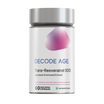

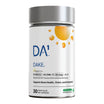
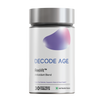
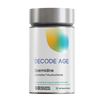
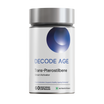
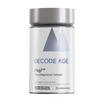
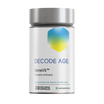

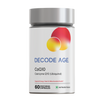

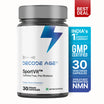

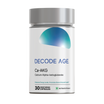
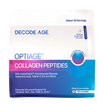
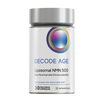





Leave a comment
All comments are moderated before being published.
This site is protected by hCaptcha and the hCaptcha Privacy Policy and Terms of Service apply.